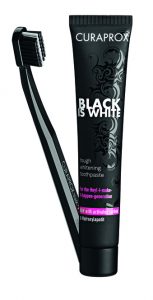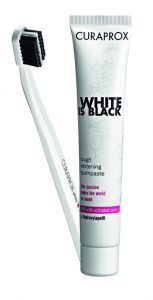Looking to the past
Featured Products Promotional FeaturesPosted by: Dental Design 18th January 2022

The past 18 months have forced the population to become more introspective and self-scrutinising. We have had to make do with the mundane within our personal spaces – taking up simple hobbies to pass the time, and finding joy in the most minute things, be that yoga, birdwatching or painting. And really, humans as a species have not changed all that much. Throughout history, we have relied on self-expression and self-exploration as a means to persevere through challenging times. Looking to the past can reveal similarities between our modern and primal selves – confirming that we truly are creatures of ritual and resourcefulness.
Not so different after all…
Similarities between ourselves and our ancestors may not be clear at first, but we are more alike than we might initially appear. Cave paintings found throughout the world (with the exception of Antarctica) demonstrate that early humans created art as a form of communication and expression, much like how we have done in recent history. One such cave – the Chauvet-Pont-d’Arc, located in southern France – was first used by humans some 30000-36000 years ago, in the Aurignacian and Gravettian periods respectively.[i] The cave boasts of hundreds of drawings, mostly of animals such as cave lions, horses, woolly rhinos, cave bears and even an owl.
The cave paintings are incredible feats of human ingenuity – they may resonate with a 21st century audience, as many of us have recently turned to creative pastimes to release stress and cope with monumental changes to our personal and societal routines. The paintings have been studied intensely since the cave’s discovery in 1994, but the actual process of painting – the tools and pigments used, as well as techniques – can also divulge a lot about the people who used them and the environment in which they lived.
 Our Palaeolithic ancestors used a range of materials to create ‘paint’, such as ochre, burnt bones and charcoal. These pigments and minerals gave early humans vivid red, black and yellow hues, which you can see in the striking panel of the red bear, the sweeping alcove of the lions and in the haunting red hand impressions. These drawings and impressions are still relatively vibrant against the cave walls to this day.
Our Palaeolithic ancestors used a range of materials to create ‘paint’, such as ochre, burnt bones and charcoal. These pigments and minerals gave early humans vivid red, black and yellow hues, which you can see in the striking panel of the red bear, the sweeping alcove of the lions and in the haunting red hand impressions. These drawings and impressions are still relatively vibrant against the cave walls to this day.
In particular, the pigment charcoal has been used by researchers to get a sense of our predecessors and the world around them. Charcoal samples from the Chauvet-Pont-d’Arc cave were analysed, and revealed their origin from pine trees. [ii] Researchers concluded that pine was a popular choice not just because of its availability, but also as it was ideal for certain painting techniques, such as smudging and blending. Thus, these prehistoric artists seemed to have developed their own artistic methods in order to add flair and depth to their paintings. Not only this, but charcoal found within the cave provided the main evidence for the presence of humans during the Gravettian period. i The small fragments of charred pine are functional, organic time capsules, which have facilitated our understanding of an enigmatic and primordial time, and the activities of our ancestors who, it seems, we are not so unalike.
Old habits die hard
Nowadays, we are discovering more and more about charcoal and its potential benefits to our health. Research[iii] has shown activated charcoal to be effective in preventing the gastrointestinal absorption of a variety of substances, such as drugs and toxins, in the stomach. Charcoal is also used in a range of skincare products to protect the skin from pollutants.[iv]
As well as its presence in a host of skin-care, foods and wellbeing products, charcoal has been lauded as a natural tooth whitening ingredient. Studies[v] have shown that  toothpastes containing charcoal may help to whiten teeth. As our teeth bear the brunt of our modern-day diets and habits, many of us turn to various products to give us our desired results sooner, such as DIY whitening kits. For dentists, this can be alarming.
toothpastes containing charcoal may help to whiten teeth. As our teeth bear the brunt of our modern-day diets and habits, many of us turn to various products to give us our desired results sooner, such as DIY whitening kits. For dentists, this can be alarming.
To ensure patients receive reliable results, dentists may consider recommending tried and tested products to use at home, to maintain good oral health as well as keeping teeth bright and stain-free. The Curaprox ‘Black is White’ toothpaste has been developed with activated charcoal, and may be a viable option for patients looking for a gentle yet effective whitening toothpaste. The porous activated charcoal absorbs stains naturally, resulting in a brighter smile without the need for SLS, bleach or plastic microbeads. It really gives patients something to smile about!
Our use of charcoal is only a minor example of the ways that our species have adopted, modified and improved materials, tools and concepts throughout the passages of history. So, whether you turn to creative outlets during uncertain times to manage anxieties, or simply delve into some self-exploration and expression, feel assured that you can always depend on the past to navigate the turbulences of the future.
For more information, please call 01480 862084, email info@curaprox.co.uk or visit www.curaprox.co.uk
[i] The Chauvet-Pont d’Arc Cave Ardèche. Available online. https://archeologie.culture.fr/chauvet/en. Accessed 7 Oct. 21.
[ii] Mental Floss. Ice Age artists used charcoal over 10,000 years to create Europe’s oldest cave paintings. Available online. https://www.mentalfloss.com/article/541657/ice-age-artists-used-charcoal-over-10000-years-create-europes-oldest-cave-paintings. Accessed 7 Oct. 21.
[iii] Springer Link. Oral activated charcoal in the treatment of intoxications. Available online. https://link.springer.com/article/10.1007/BF03259930. Accessed 8 Oct. 21.
[iv] Journal of Drugs and Dermatology. Revisiting the skin health and beauty pyramid: a clinically based guide to selecting topical skincare products. Available online. https://jddonline.com/articles/dermatology/S1545961621P0695X. Accessed 8 Oct. 21.
[v] National Library of Medicine. Effect of novel charcoal-containing whitening toothpaste and mouthwash on colour change and surface morphology of enamel. Available online. https://pubmed.ncbi.nlm.nih.gov/34083921/. Accessed 7 Oct. 21.

No Comments
No comments yet.
Sorry, the comment form is closed at this time.



